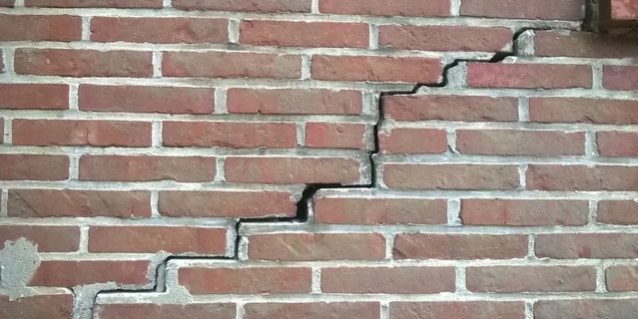There are two types of people in the world: Those who panic when they see a hairline crack in a brickwork wall, and those who ignore gaping holes which could possible lead to a parallel universe. All joking aside, unless you have a professional background in construction, it is extremely difficult to determine whether a crack is cosmetic or symptomatic of a serious problem. Cracks in brickwork can materialise for a number of reasons, or from a combination of unrelated reasons. Regardless, the potential implications of cracks in brickwork can result in huge repair or renovations costs for homeowners. Older homes, especially, are likely to suffer from serious damage from subsidence, for instance. Obviously, building regulations change over time as the industry learns more about which is the best practice. Some older homes may not meet the grade which means, over time, inadequate building methods will cause problems with structural integrity.
However, there exists a rule of thumb which will allow you to determine the potential causes and likely degradation of your brickwork, so you can take appropriate steps to reverse the damage. These guidelines are not set in stone, so if you have serious concerns about the cracks in your brickwork, a building inspector can carry out an assessment and determine the root of the problem.
Determining the level of Damage Caused by Cracks in Brickwork
Normal wear and tear can often lead to hairline cracks appearing in brickwork. These cracks, although unsightly, do not necessarily indicate that there is a serious underlying issue with the integrity of your property. On most scales, hairline cracks are defined as those which are 0.1mm or less in width. A hairline crack is easily fixed with a lick of paint or a thin application of filler, depending on the style of brickwork. A cosmetic crack, by its very nature, will not impact on the functionality of your home’s fittings, doors or windows. When doors and windows become warped or start sticking, you are no longer dealing with cosmetic damage.
Once the cracks in brickwork begin to cause problems with other structures within your home, the potential cost of repairs increases. If you notice that doors and windows are still, or there is a separation around fittings, the cracks are likely between 0.1mm – 5mm. The pressure on the surrounding structures will cause pressure and change in alignment, which results in those structures requiring maintenance or repair. At this stage the cracks may not be indicative of a serious problem, but you will still need to carry out repairs to ensure that your home is functional and all rooms are easily accessible. It sounds manageable but, as most homeowners who have dealt with this level of brickwork damage will tell you, dealing with frequent repointing and weather-tightness improvements is an unnecessary and costly stress.
Moderate to Extreme Cracks in Brickwork
Again, the terms used when describing cracks in brickwork are subjective. Unless there is risk of serious structural damage, it is up to the individual to determine what he or she is prepared to tolerate. So, when it comes to moderate damage, you can either do a patch job or tackle the problem at its root. Moderate cracks in brickwork are those which typical need intervention from a mason. You will most likely need to replace external brickwork, make adjustments to doors and windows, and – in severe cases – check internal and external plumbing for damage. Be warned, however, that the difference between moderate to extreme brickwork damage can be slight and often catastrophic if not addressed.
Extreme cracks in brickwork are usually around 15mm – 25mm. It is important to understand that cracks so pronounced as this are most likely a sign of serious structural damage. No level of repair or maintenance will solve the problem. The issue must be addressed and necessary steps taken to reinforce and strengthen the foundations of your home. If left too long, you could lose everything when the issue could have been resolved by carrying out some essential reinforcements to the structure of your home.







